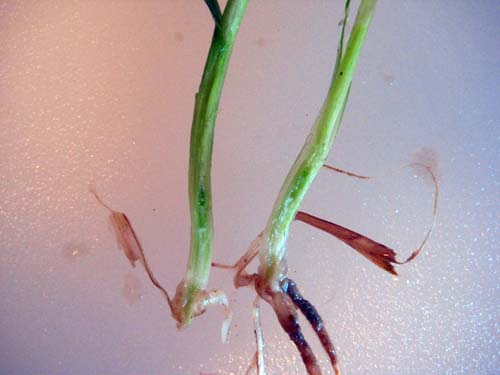Wheat continues to develop
Monitoring wheat’s growth stages is critical to timely management practices.
Judging wheat rate of development has certainly been more difficult this spring because of unprecedented spurts of weather this past March and seems to require greater vigilance in monitoring the crop. At this point, much of Michigan’s wheat is approaching or has reached the full-tiller stage of development. This is referred to as growth stage 5 in the Feekes scale. Evidence of this stage includes the plants more erect posture and the expanded growth of the tillers. More conclusive evidence, however, is that a cross-section of the plant’s base reveals the developing head as shown in the photo below.

Feekes 4-5 or Zadoks 30 growth stage in
wheat. Photo credit: Shawn P. Conley, Univ. of Wisconsin
Growers whose wheat is at growth stage 5 and elect to use 2,4-D or dicamba should apply the product before further development occurs to avoid crop injury. Some growers also attempt to have the fertilizer nitrogen applied by this time to minimize damage from wheel traffic.
Growth stage 6 represents more visible evidence that the reproductive phase has been initiated. It is more distinctive than previous stages as a node or joint can be felt above ground level and immediately below the developing head first seen during growth stage 5. It generally follows growth stage 5 by several days depending, in part, on air temperatures. Growth stage 6 marks the time for some growers to apply fungicides, herbicides (other than 2,4-D and dicamba) or fertilizer nitrogen.
A more complete description of wheat’s growth stages can be found in Texas AgriLife Extension Service’s publication, “Growth Stages of Wheat: Identification and Understanding Improve Crop Management.”



 Print
Print Email
Email



